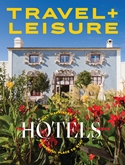Dubrovnik is an old city on the Adriatic Sea coast in the extreme south of Croatia. It is one of the most prominent tourist resorts of the Mediterranean, a seaport and the center of the Dubrovnik-Neretva county. Its population was 43,770 in 2001. Dubrovnik is nicknamed "Pearl of the Adriatic" and is listed as a UNESCO World Heritage Site.
The city of Dubrovnik/Ragusa was built on maritime trade. In the Middle Ages it became the only city-state in the Adriatic to rival Venice. Supported by its wealth and skilled diplomacy, the city achieved a remarkable level of development during the 15th and 16th centuries. Furthermore, Dubrovnik was one of the centers of the development of the Croatian language and literature, home to many notable poets, playwrights, painters, mathematicians, physicists and other scholars.
Today Dubrovnik is the proudest feather in Croatia's tourist cap, an elite destination and one of the most beautiful towns in the Mediterranean, definitely a place to visit. Dubrovnik used to be an independent republic, surviving mostly on trade. It managed to survive many centuries, with constant threats to its territory, particularly from the mighty Ottoman Empire and Venice. As early as 19th century, it was discovered by celebrities, to get its well-deserved title of elite destination in the 20th century. The fact that nine out of Croatia's fifteen most luxurious hotels are situated in Dubrovnik shows how important it is to be seen in Dubrovnik. It was thus visited by numerous kings, queens, princes and princesses, presidents, high diplomats, celebrities and businessmen, including, of course, the late Pope John Paul II, who was also an honorary citizen of the city of Dubrovnik.
Tuesday, October 7, 2008
Saturday, October 4, 2008
Zlatibor mountine - Serbia

Zlatibor (meaning "Golden Pine") is a very popular mountain resort area in south-western Serbia. It is bounded on the north by Mount Tara, to the east by the Veliki Rzav River, to the south by the Uvac River and to the west by Bosnia and Herzegovina.
Warm and pleasant summers and not so cold winters. Zlatibor's air is very clean and healthy and going to Zlatibor is recommended for those who have tyroide gland-related and breathing issues.
Medium hills and a lot of fields. Highest peak is Tornik at 1496 meters (4908 feet), and other peaks are Brijac, Cigota, Vijogor, Konjoder, Liska, Gruda... Branesko polje (the Branesci Plain) is the biggest Zlatibor's plain.
Zlatibor has a lot of very pure and clean water. There are many smaller and bigger rivers, but there are no natural lakes. There are only a couple of artefact lakes. Zlatibor's waters have good infuence on human health because they contain some minerals.
Many animals inhabit Zlatibor's woods and pastures. More than 120 plant species can be found in Zlatibor's fields.
The first inhabitants of Zlatibor were the Illyrians. They left their small tombs all over Zlatibor. Romans conquered Zlatibor in 4th century BC and the Illyrians were romanized.
Slavs came in 7th century from what is today Poland.
From 1463 to 1804, Zlatibor was a part of the Ottoman Empire.
Beginning of tourism in Zlatibor dates from August 1893, when Aleksandar I Obrenović, king of Serbia, came to Kulaševac, as Kraljeve Vode were called back then. However, the real tourism started in 1905, when the king Petar I Karađorđević visited Kraljeve Vode.
In formal situations, Zlatiborians use the literary Serbian language. In unformal situations, however, languages that are used are the Traditional Zlatiborian, and the Neo-Zlatiborian.
The Traditional Zlatiborian is a dialect of the Serbian language. It is quite similar to the standard Serbian, but there are many differences. Knowing standard Serbian could be useful if you speak with a Zlatiborian villager, but not always. The Neo-Zlatiborian is a mixture of the Traditional Zlatiborian and the literary Serbian language.
English is not spoken in Zlatibor's rural areas, but in urban areas (in Kraljeve Vode and Cajetina) many people just know some words of it, or speak it well. However, entering a hotel or a restaurant where English isn't spoken could be quite possible.
When you come to Zlatibor, you will probably come to Kraljeve Vode. Kraljeve Vode is a small town, but it's very modern and urban (even more than Cajetina, the administrative centre of Zlatibor). It is connected with other Zlatibor's towns and villages. When speaking about Zlatibor, many people usually refer to Kraljeve Vode only.
The best way to get to Zlatibor is to get to Belgrade, the capital of Serbia, and then to look for a direct bus line to Zlatibor. Bus lines connect Zlatibor with all parts of Serbia, and Montenegro.
You can also come to Zlatibor by train from Belgrade and other bigger cities, but you'll end up in Semegnjevo, Susica, Sljivovica, or Jablanica, Zlatibor's villages. The main train station for Zlatibor, despite being called the Zlatibor Train Station (Zeleznicka stanica Zlatibor) is located in the village of Semegnjevo, 10 km away from Kraljeve Vode. Coming to Kraljeve Vode from there could be difficult, because there aren't a lot of people who speak English, so it would be better to leave the train in the neighboring city of Uzice, and then use a bus to come to Zlatibor.
Subscribe to:
Comments (Atom)
